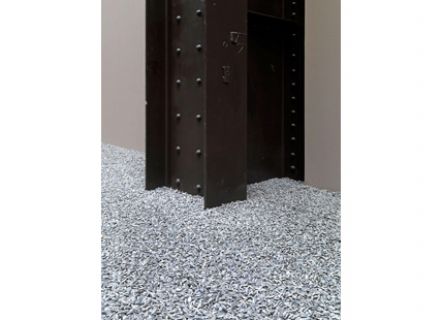
作为联合利华——泰特涡轮大厅艺术项目邀请的第十一位艺术家,艾未未也是首位参加该项目的亚洲艺术家。“联合利华系列项目展”(The Unilever Series)由泰特现代美术馆(Tate Modern)与联合利华公司(Unilever)合作推出,邀请国际性艺术家进行展示,始于2000年并将持续到2012年,迄今已吸引超过两千万观众前往参观。本次作品展名为《葵花籽》(Sunflower Seeds),将持续到2011年5月2日结束。
占据了涡轮大厅庞大空间的过亿颗葵花籽看起来毫无差别,实际却是由总重达150吨的手工陶瓷工艺品构成,在中国瓷都景德镇的手工作坊中历时二年半由近一千六百人完成。《葵花籽》意在营造可使观众身临其境的装置作品,它可以被触摸,可以被踩踏。作品将可以在其表面从容行走的行为与作品制作背后付出的巨大努力及陶瓷本身珍贵易碎的属性形成强烈对比。在英语中,陶瓷(china)与中国是同一个单词,因此艾未未寓意深刻地以陶瓷制葵花籽表现当今的“中国制造”现象,并拉近与英国观众的距离,表现愈加密切的跨地域文化交流和经济往来。
泰特现代美术馆馆长希娜•瓦格斯塔夫(Sheena Wagstaff)这样评价艾未未的新作,“这是一个貌似简单实则精妙绝伦并隐含深层意味和思考的作品。”(It’s a beautifully simple idea that belies an extraordinary rich layer of meanings and references.)策展人朱丽叶宾厄姆(Juliet Bingham)补充道:“触摸一粒葵花籽就是感受整体,这非常深刻地表现了个人与整体之间的关系。”(To touch one seed is to touch the whole. It’s a poignant commentary on the
relationships between individuals and the masses.)
本次装置展也引起了英国媒体的广泛关注及撰文评论。
泰特现代美术馆对《葵花籽》做了如下阐释:
对艾未未来说,葵花籽——由朋友们所分享的街头小吃——承载着与毛泽东所引发的文化大革命(1966-1976)相关的个人联系。尽管个人被剥夺了人身自由,宣传形象却将毛主席描绘成太阳,而人民都是朝向着他的向日葵。艾未未仍记得在那段极度贫困,压抑和不确定的时光中,葵花籽的分享是以人类悯善的方式为快乐、友谊和善意提供了空间。
作品《葵花籽》包含过亿颗葵花籽,这数字是北京人口数的五倍,也近于中国网民的四分之一。这项作品似乎提出了很多问题:这对当今社会的个体意味着什么呢?除非我们共同行动不然我们就是微不足道和无力的吗?我们不断增加的欲望,物质和人口数对社会,环境和未来意味着什么呢?
For Ai, sunflower seeds – a common street snack shared by friends – carry personal associations with Mao Zedong’s brutal Cultural Revolution (1966-76). While individuals were stripped of personal freedom, propaganda images depicted
Chairman Mao as the sun and the mass of people as sunflowers turning towards him.
Yet Ai remembers the sharing of sunflower seeds as a gesture of human compassion,
providing a space for pleasure, friendship and kindness during a time of extreme poverty,
repression and uncertainty.
There are over one hundred million seeds, five times the number of Beijing’s population
and nearly a quarter of China’s internet users. The work seems to pose numerous
questions. What does it mean to be an individual in today’s society? Are we insignificant
or powerless unless we act together? What do our increasing desires, materialism and
number mean for society, the environment and the future?
英国每日电讯报(Telegraph.co. UK)如下报道:
艾未未曾说过,他之所以选择以陶瓷形式重现葵花籽是因为,文化大革命时期由自然灾害导致的饥荒年月中,葵花籽是少数可靠的食物,休闲和社会交往的来源之一。对他而言,葵花籽象征着中国人民。
Ai Weiwei has said that he chose to reproduce sunflower seeds in porcelain because
during the famine years under Mao they were one of the few reliable sources of food,
comfort and social interaction. For him they symbolise the Chinese people.
英国《卫报》 (Guardian. co.UK)的艾德里•安瑟尔(Adrian Searle)评述:
艾未未通过一种态度而不是风格来呈现世界。他使用博客和Twitter经常交流。尽管他的作品看起来荒诞,但是他了解艺术家所处的位置并且意识到他的作品存在于社会文化经济全球性的联系之中。他拥有着杜尚所缺乏或无法拥有的并为沃霍尔所掩饰的社会参与性。
Ai takes on the world through an attitude, rather than a style. With his blogs and tweets,
he is a constant communicator. However absurd his works might appear to be,
he understands the place of the artist, recognising that his work exists in a global world
of social, cultural and economic relations. He has a sort of social engagement Duchamp
lacked, or couldn’t have, and that Warhol dissembled.
路透社(Reuters)的亚当•乔丹(Adam Jourdan)评论如下:
五十三岁的艾未未提到这项作品是为反映个人主义,批量生产和工艺的概念而设计。他也将之与他使用的社交网络平台Twitter相联系,他把它看作接触中国青年的工具。
Ai, 53, said the work was designed to reflect the concepts of individualism, mass
production and craftsmanship. He also traced a connection to his use of social networking
platform Twitter, which he saw as a tool to reach out to China’s youth.
1957年出生于北京的艾未未是当今中国艺术最杰出和最具影响力的人物之一。他既是概念艺术家、策展人,也是批评家、设计师和建筑师,他的作品涵盖广泛并颇具挑战性和开拓性。在过去二十年中,艾未未在中国当代艺术的发展中扮演了重要角色,从1979年的第一届《星星画展》到2008年与赫尔佐格和德梅隆建筑设计公司合作设计奥运会主体育场“鸟巢”。
2009年中艾未未也继续创作了一些令人印象深刻的作品并继续他对于社会政治的关注。为纪念2008年汶川地震,他创作了《铭记2009》(Remembering 2009),在德国慕尼黑艺术之家美术馆(Haus der Kunst)正面用数千名孩子的书包配以汉语构成了一道墙。援引地震中失去了孩子的母亲的话:“她曾在这世界上快乐地生活了七年。”同样在艺术之家美术馆(Haus der Kunst),艾未未制作了覆盖380平方米面积的地毯并命名为《软地2009》(Soft Ground).他精心设计模仿了地板上969块独立的瓷砖,组成了记录70年以来多项展览和参观者们足迹的地图。艾未未曾说过:“自由是有权利质疑任何事物,”不管是视觉上微妙或者宏观的,他的大型装置作品始终是不断探索精神的产物并构成了他强有力并发人深醒的艺术创作主体。
艺讯网海外记者:王姝




























